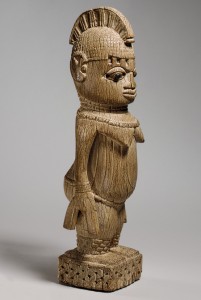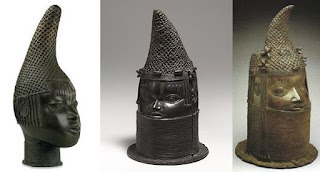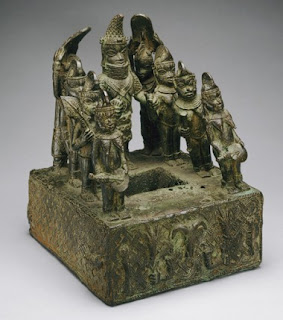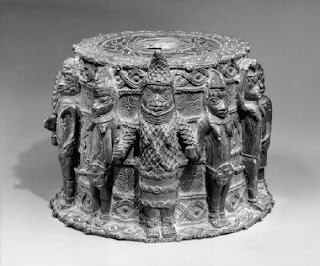NB Commentary: This is a very
interesting article that I am reprinting. Leave your comments below.
Open letter to would be repatriates to Nigeria, by Oluyemi
Olawaiye
Written by Dr. Oluyemi Olawaiye
I have
battled with the idea of writing this article for over 3 years, but only got
the needed incentive yesterday in the form of an extremely shallow,
misinformed, inaccurate, deceptive and downright misleading documentary I
watched on You Tube about how Nigeria was this drastically rising economic
super power within the continent of Africa, and was going through this massive
commercialization phase that every Nigerian in the diaspora needed to be a part
of and how we all need to move back home to do great things with our foreign
accents.
While
this is largely true in this new era where online businesses are booming, our
artists are making more money than ever before through worldwide recognition,
performances and endorsements, comedians are charging N2million naira per table
at sold out shows and bloggers are able to afford property in the most
exclusive parts of the country, Nigeria has admittedly undergone a facelift in
terms of realizing its greatest asset, its people, and investing in them enough
to where it almost seems like we have finally gotten it right and are on the
right track to self sustenance and reliability as a nation.
The reality however is a little different and if
you ask me, worse off than it previously was as the advantages you thought you
had as a REPATRIATE have diminished greatly and continue to fade by the second.
That is
why mini-documentaries like the one I watched agitate me, why you ask? Simple,
I watched a similar video four years ago, got flabbergasted by the unparalleled
show of affluence (effizzy) and like a castrated buffoon I plunged myself into
the most hellish years of my life.
The
truth is, things are more difficult now than ever before for returnees, and
there are quite a number of questions that need to be answered before you
embark on your post youtube video exodus into new horizons. They address most
of the reasons why almost every repatriate I know has moved back to their
foreign country of origin.
REALITY CHECK
Most
potential returnees who watch these videos have pretty much forgotten the
reason why they left naija in the first place. They are now so immersed in the
American way of life where you can pretty much be whatever you want (equal
opportunity employment), go to the same school as societal elite (thanks to
student loans), drive pretty much whatever car you desire (thanks to auto
loans), and live in very nice houses (thanks to mortgages), so much so that
they forget that we are from Nigeria, where man pass man.
So we
watch these videos and delve down an all too familiar rhetoric; “I must enter
naija meeeeeehn”…”naija is where its happening”…”f__k all this foreign country
shit mehn im done”…”im going to naija to take over son”…”my boy lives in lekki
and drives a range rover, what am I still doing here” amongst other popular
pseudo-euphemisms. Well…SON…here are a few reality checks:
Where do
you plan on staying when you land in naija “meeeeehn”????: Where did you live
before you left naija? The diversity lottery opened doors for quite a number of
migrants. Many of whom were not resident in lagos before the left Nigerian
shores. All the videos you see depicting naija upscale living are based in
Lekki/VI/Ikoyi. You have probably visited naija a few times for a week or two,
spent your hard earned savings (which seems like a lot cos you’re only in town
for such a short period), stayed on the island by virtue of the people you know
and its quite ok cos you are just on holiday and will be blowing back out as
soon as the December flex fest is over. At this point you can tell people that
your job in America involves technical maintenance of the moon and stars and
they will believe you.
It is however a different scenario entirely when you are
there to stay. Your grace period before the yankee / uk induced euphoria wears
out is typically about one month by which time the naija sun will have
destroyed all the freshness you acquired over the years, you are starting to
become aggressive by virtue of everyone you deal with on a day-to-day basis,
your accent and swag are fading, and your hosts are finally starting to
realize “oh shit…we are housing someone who used to live in Ilorin eeeewwww!!!!”1 At this point
your fall from grace will only be comparable to that of satan when he was cast
out of heaven. Your American passport is not visa free to the island. And for
those who were actually resident in lagos before travelling, good luck living
the Nigerian You Tube returnee dream in Amuwo Odofin or Mushin.
EMPLOYMENT
Back in
the days, most of our parents returned to find jobs waiting for them as well as
multiple programs in place to facilitate smooth transitioning for returnees.
The same was applicable in the recent past when a lot of corporations were
springing up left and right and most craved the added knowledge, expertise and
general ambiance you got from a confident good looking young man/woman walking
down your hallways looking sharp and talking with an American or british
accent.
Well
guess what my fellow repatriates, they are on to you!!!! You cannot bamboozle
your way through interviews with your mastery of a foreign tongue anymore. The
days of passing off a community college education as an undergrad degree are
over. They have realized that they can pay less to locally trained individuals
and get more value. Again, your accent cannot save you, everyone has one.
First of all everybody is a foreign graduate now, even the
ones who schooled in Cotonou, you all fall under the same class according to
NYSC. Secondly, I reiterate that everyone has an accent now, all you have to do
is watch “Keeping up with the Kardashians”. So if you think you will charm
anyone at your interview by sounding like you swallowed a rattle snake then you
have another thing coming, And naija interviewers go out of this
world!!!! After you are done with your written test, 5 people now sit you
down and ask you GMAT questions that have nothing to do with the position
applied for.1
I myself was a victim of this. After 6 months of searching
I finally secured an interview with one of the indigenous Oil companies. I
appeared there in my suit looking like a million dollars and by the time I left
I was in tears feeling like N25 naira. This baboon that interviewed me did
everything in his capacity to make all my answers sound retarded to a point
where I felt like I never went to school. My painstakingly acquired American
accent disappeared mid-interview out of frustration. Bear in mind I finished
with a first class. I’m guessing Einstein would have been a more adequate
candidate. Which brings me to my next question; DO YOU HAVE A GODFATHER?
Believe me you need one of these if you are ever to make any head way in
Nigeria.1 A
friend confided in me that he was unable to answer any of the questions posed
to him during his interview and still got the job and a promotion a week later.
True story.
Fast
forward to 2 years later (yes 2 years without income!!!) I finally
secure a job with another indigenous Oil company and set out to prove that I
was the man for the job, impressing my bosses with my work ethic and even
getting promoted within the first 4 months. It was smooth sailing until this
senior consultant who was a friend to the Chairman was hired. For whatever
reason he didn’t like me and I went from superstar manager to incompetent
employee. I eventually found out he was sleeping with one of my employees who
conveniently took over my position after I resigned. Which brings me to my next
question; CAN YOU DEAL WITH THE POLITICS OF
THE NIGERIAN WORKPLACE?
NYSC
Believe
it or not 90% of the Nigerians I speak with abroad do not have any intention of
doing the mandatory 1 year NYSC exercise, and this was when they still gave
foreign graduates the option of picking either Lagos or Abuja as their choice
locations. That is long over now. Long story short, I was posted to a remote
village in ekiti where I:
·
Had to use bushes as my toilet
·
Was pursued by hunters while pooping
·
Caught bronchitis
·
Almost got bitten by a snake
·
Ate unimaginable food
·
Wasn’t allowed to redeploy
The rest
is better left to the imagination.
SECURITY
You hear
all these stories of armed robberies in Nigeria and I distinctively recall
thinking to myself that literally everyone I knew in Nigeria had experienced
some form of encounter with armed robbers. I kept wondering when it would be my
turn. Sure enough one faithful October morning on my way to work at
about 6:30am I was confronted by a robber who had a sawed off double
barreled shotgun pointed at my head in early morning traffic. A month later I
was chased by armed robbers on okada motorcycles from Lekki phase one to my
office in Parkview ikoyi. Few months later my driver was stabbed multiple times
when my car broke down along airport road due to lack of fuel. At least four
close friends who moved down after me have also been attacked. This is the
reality here in Nigeria, there is absolutely NO security, so going around with
that “I can move around as I please” mentality
you flew in with might get you in trouble if you do aren’t careful.
HEALTHCARE
Lets
just say pray that you do not need to critical medical attention. Cos in a
country where every affliction is treated as malaria, na OYO you dey. And God
forbid you get into an accident. Emergency healthcare is not in our character,
people would rather snap pics and send to Linda Ikeji as if in addition to
being a super blogger, she also possesses the super power to heal the injured.
POWER
Non-existent.
Was a lot better when the new government came in, but now we are back to the
norm. No good roads either so whatever car you ship down will be beat up in a
matter of months, that is a promise. Up naija.
BUSINESS
The best
strategy is to always have a secondary source of income. So just in case you
are unable to secure gainful employment as quickly as anticipated, it is well
advised to have your hustle hat close by and you will be well advised to find a
local hustle. We are not an export driven economy, but an import driven one. So
if your business is purchase based, how do you survive when your N280,000 naira
only gets you $1000 dollars?
CONCLUSION
I could
go on about the realities that are to be expected when moving back to our GREAT
country, ultimately home is still home. You will better understand what we are
dealing with when you sit and think about the trillions of dollars that have
flowed through our economy since the oil boom of the 1970’s and our country
still looks the way it does while a country like Dubai has managed to replicate
heaven in the same timeframe.
We must move back with the intention to effect real change and not continue to live out the delusions of grandeur. We are fighting an uphill battle and it is very important for us not to get carried away by a few nightlife and party scenes and the general mediocrities that are being passed off as development while we continually provide ample comedic relief for other African countries and are being laughed at as the greatest joke on the continent.
This
article does not serve to dissuade, but better educate readers by giving a more
realistic view of what is obtainable when embarking on a move back to Nigeria
and assist in adequate preparedness and decision-making.
So
unless you can sing like Wizzy or crack jokes like Basket mouth, you are well
advised to curb your enthusiasm and take everything with a grain of salt.
Remember we Nigerians are masters of illusion and know how to put up the
appearance of affluence like no other. Be strategic in your planning and cover
all bases as best as you can. Most of the people who encouraged you to move
down WILL NOT assist you when you do. Remember why you ran away from here
in the first place.









